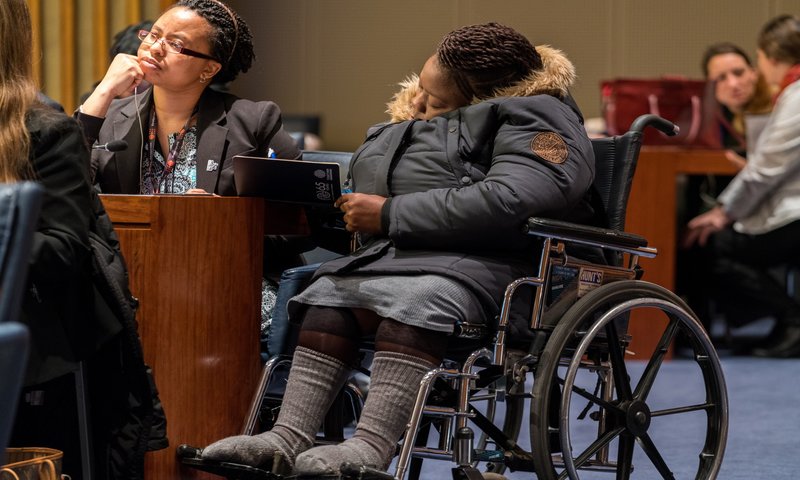
Advancing the leadership of women and girls with disabilities brings together two strong advocacy communities - the disability community and the gender and women’s rights community - in pursuit of a common cause. Over the last two decades there has been significant interest within the international community to advance the rights of women and girls with disabilities.
The United Nations Convention on the Rights of Persons with Disabilities (CRPD) has 172 ratifications/accessions and 160 signatories with Article 6 referring specifically to women and girls. Member States that have nationalised the Sustainable Development Goals (SDGs) into domestic policy have shown their commitment to including women and girls with disabilities in their development actions.
However the problem, according to Ms. Akiko Ito, Chief of the Secretariat for the Convention on the Rights of Persons with Disabilities (SCRPD), is that efforts towards achieving the 2030 Agenda and implementing the SDGs have not been systematic. Consequently, women and girls continue to be left behind.
To address this issue, a networking workshop, co-organised by the SCRPD of UNDESA-DSPD and the Permanent Mission of Japan to the United Nations, took place on 16 March at the UN Headquarters during the 61st Commission on the Status of Women (CSW61). Titled ‘Advancing the Leadership of Women and Girls with Disabilities’ the workshop brought together a diverse network of individuals to share experiences and offer creative initiatives to achieve the 2030 Agenda and other internationally agreed development agendas in a way that is inclusive of and responsive to the leadership of women and girls with disabilities.
Speakers identified obstacles that must be overcome if women and girls with disabilities are to advance as leaders. They included, but are not limited to: lack of early identification of children with special needs; inaccessibility to services and places; unspecialised education/skills programmes; deficient disaggregated data; invisibility; lack of understanding and consideration of intersectionality; exclusion and; unequal opportunity and status in society.
There were many best practices shared on empowering women and girls with disabilities. At the global level, organised groups of women with disabilities are working with NGOs and influencing policymakers, for example, by reporting to treaty bodies on health services for women with disabilities, bringing the intersectional issue of gender equality and disability to the table and promoting the consideration of women with disabilities in humanitarian actions. At the regional/national level across different countries, universities are empowering youth with disabilities to be self-advocates by providing them with the opportunity to speak about their challenges and hopes for change.
Although progress has been made at local, national and global levels in terms of advancing the leadership of women and girls with disabilities, more must be done. Some of the key concerns raised included; the lack of women with disabilities in the UN treaty system and as UN staff more generally; the unnecessary stretching of resources between the mainstream feminist movement and the women with disabilities movement; deficient consideration of mental health and sexual assaults; disproportionate budget allocations; lack of involvement of private businesses in the discourse; and an insufficient number of specialised training programmes for women and girls with disabilities.
The importance of combining multilevel resources is crucial if leadership of women and girls with disabilities is to be included in national and global agendas. We must advance the leadership of women and girls with disabilities to achieve the Sustainable Development Goals by 2030, ensuring no one is left behind.
To learn more about DSPD's work on disability issues click here.
SOURCE: UNDESA DSPD
 Welcome to the United Nations
Welcome to the United Nations